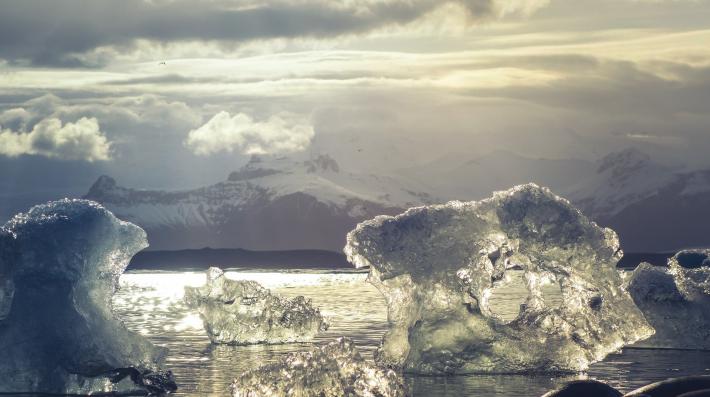
Nairobi, March 18 (NNN-UN)– Even if the world were to cut emissions in line with the Paris Agreement, winter temperatures in the Arctic would rise 3-5°C by 2050 and 5-9°C by 2080, devastating the region and unleashing sea level rises worldwide, a press release issued at the UN Environment meet here last week said.
Citing the Global Linkages – A graphic look at the changing Arctic report, the press statement said that rapidly thawing permafrost meanwhile could even accelerate climate change further and derail efforts to meet the Paris Agreement’s long-term goal of limiting the rise in global temperature to 2°C,
· Even if Paris Agreement goals met, Arctic winter temperatures will increase 3-5°C by 2050 compared to 1986-2005 levels.
Other environmental pressures on the Arctic identified by the paper – released at the United Nations Environment Assembly – include ocean acidification and plastic pollution.
“What happens in the Arctic does not stay in the Arctic,” said Joyce Msuya, UN Environment’s Acting Executive Director. “We have the science; now more urgent climate action is needed to steer away from tipping points that could be even worse for our planet than we first thought.”
Even if global emissions were to halt overnight, winter temperatures in the Arctic would still increase 4 to 5°C by 2100 compared to the late 20th century, the study finds. This increase is locked into the climate system by greenhouse gases already emitted and ocean heat storage.
Arctic societies now must respond to climate change through suitable adaptation actions. Arctic Indigenous Peoples already face increased food insecurity. By 2050, four million people, and around 70% of today’s Arctic infrastructure, will be threatened by thawing permafrost, the report noted.
· Thawing permafrost could wake ‘sleeping giant’ of more greenhouse gases, potentially derailing global climate goals.
“The urgency to achieve the goals of the Paris Agreement is clearly manifested in the Arctic, because it is one of the most vulnerable and rapidly changing regions in the world,” said the FinnishMinister of the Environment, Energy and Housing, Kimmo Tiilikainen. “We need to make substantial near-term cuts in greenhouse gas emissions, black carbon and other so-called short-lived climate pollutants all over the world.”
The impacts globally would also be huge. From 1979 to the present, Arctic sea ice is estimated to have declined by 40%. Climate models predict that, at the current rate of CO₂ emissions, Arctic summers will be ice-free by the 2030s. The melting of the Greenland ice cap and Arctic glaciers contribute to one third of sea level rise worldwide.
Even if the Paris Agreement is met, Arctic permafrost is expected to shrink 45% compared to today. Globally, these frozen soils hold an estimated 1,672 billion metric tonnes of carbon. Increased thawing is expected to contribute significantly to carbon dioxide and methane emissions. The resulting warming will in turn lead to more thawing – an effect known as ‘positive feedback’. This accelerated climate change could even throw the Paris Agreement’s 2°C goal off track, the report underlines.
Ocean acidification and pollution taking their toll
Ocean acidification is disproportionately impacting Arctic marine species. This is because cold water can hold more dissolved CO2, while melting ice spreads the acidity further. Since the beginning of the industrial revolution, the world’s ocean has become 30% more acidic. The more acidic the water, the more energy Arctic corals, molluscs, sea urchins and plankton must use to build their shells and skeletons.
Despite its pristine image, the Arctic’s geographical characteristics and cold climate mean the region’s ocean, seafloor and coastline are a sink for contaminants from around the globe. Only 1,000 out of the 150,000 chemical substances in use worldwide are regularly monitored. A global approval system for new chemicals is therefore needed, the report argues. Alternative controls are also seen as necessary for chemicals that fall outside of existing treaties.
On a positive note, the amount of regulated chemicals in humans and animals living in the Arctic was found to be decreasing. These include some Persistent Organic Pollutants regulated under UN Environment’s Stockholm Convention. However, the decrease could be due to changing diets.
NNN-UN
